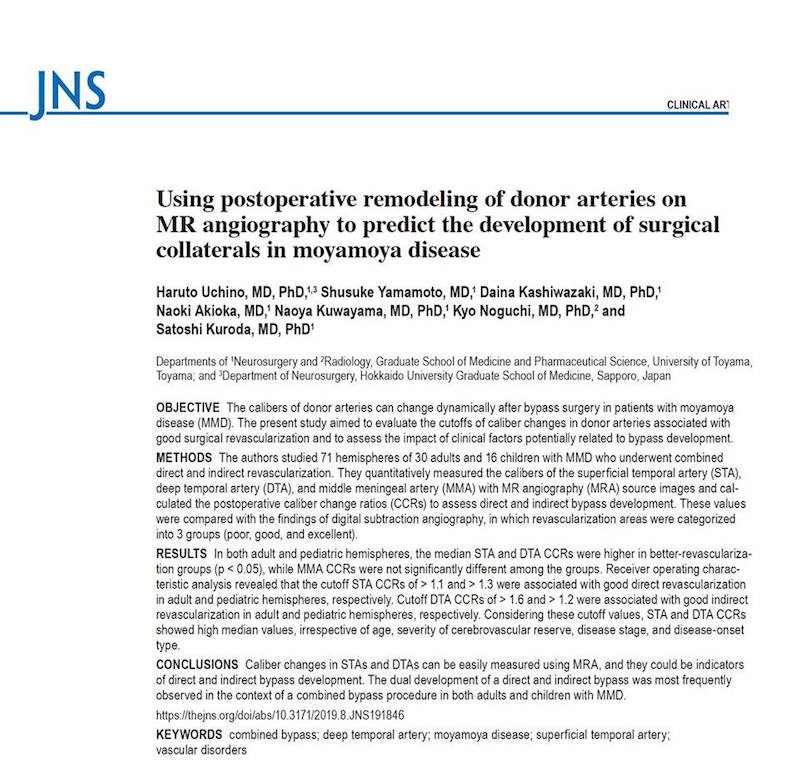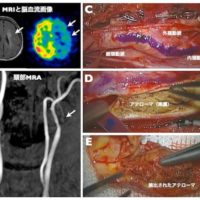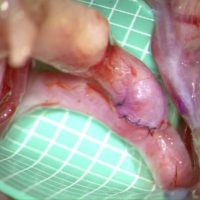
北海道大学〜富山大学で一緒に働いてきた内野晴登先生の研究成果がJournal of Neurosurgery誌に掲載されました。
もやもや病の患者さんに対して直接+間接バイパス術を実施したのち、バイパスの発達の程度を確認するためにこれまでは脳血管撮影を実施してきましたが、非侵襲的なMRAで代替できないかどうかを検証しました。その結果、浅側頭動脈の径が術前と比べて、成人で1.1倍に、小児で1.3倍以上になっていれば良好な直接バイパスが良好に形成されていること、深側頭動脈の径が術前と比べて、成人で1.6倍に、小児で1.2倍以上になっていれば、側頭筋を介する間接バイパスが良好に形成されていることが判明しました。
A Voyage to Depth of Neuroscience Vol. 66
Dr. Haruto Uchino, one of our staffs published his recent research results on moyamoya disease in Journal of Neurosurgery now.
Using postoperative remodeling of donor arteries on
MR angiography to predict the development of surgical
collaterals in moyamoya disease
Haruto Uchino, Shusuke Yamamoto, Daina Kashiwazaki, Naoki Akioka, Naoya Kuwayama, Kyo Noguchi, and Satoshi Kuroda
J Neurosurg 2019 Nov. 8 [Epub ahead of print]
Abstract
OBJECTIVE The calibers of donor arteries can change dynamically after bypass surgery in patients with moyamoya
disease (MMD). The present study aimed to evaluate the cutoffs of caliber changes in donor arteries associated with
good surgical revascularization and to assess the impact of clinical factors potentially related to bypass development.
METHODS The authors studied 71 hemispheres of 30 adults and 16 children with MMD who underwent combined
direct and indirect revascularization. They quantitatively measured the calibers of the superficial temporal artery (STA), deep temporal artery (DTA), and middle meningeal artery (MMA) with MR angiography (MRA) source images and calculated the postoperative caliber change ratios (CCRs) to assess direct and indirect bypass development. These values were compared with the findings of digital subtraction angiography, in which revascularization areas were categorized into 3 groups (poor, good, and excellent).
RESULTS In both adult and pediatric hemispheres, the median STA and DTA CCRs were higher in better-revascularization groups (p < 0.05), while MMA CCRs were not significantly different among the groups. Receiver operating characteristic analysis revealed that the cutoff STA CCRs of > 1.1 and > 1.3 were associated with good direct revascularization in adult and pediatric hemispheres, respectively. Cutoff DTA CCRs of > 1.6 and > 1.2 were associated with good indirect revascularization in adult and pediatric hemispheres, respectively. Considering these cutoff values, STA and DTA CCRs showed high median values, irrespective of age, severity of cerebrovascular reserve, disease stage, and disease-onset type.
CONCLUSIONS Caliber changes in STAs and DTAs can be easily measured using MRA, and they could be indicators
of direct and indirect bypass development. The dual development of a direct and indirect bypass was most frequently observed in the context of a combined bypass procedure in both adults and children with MMD.









